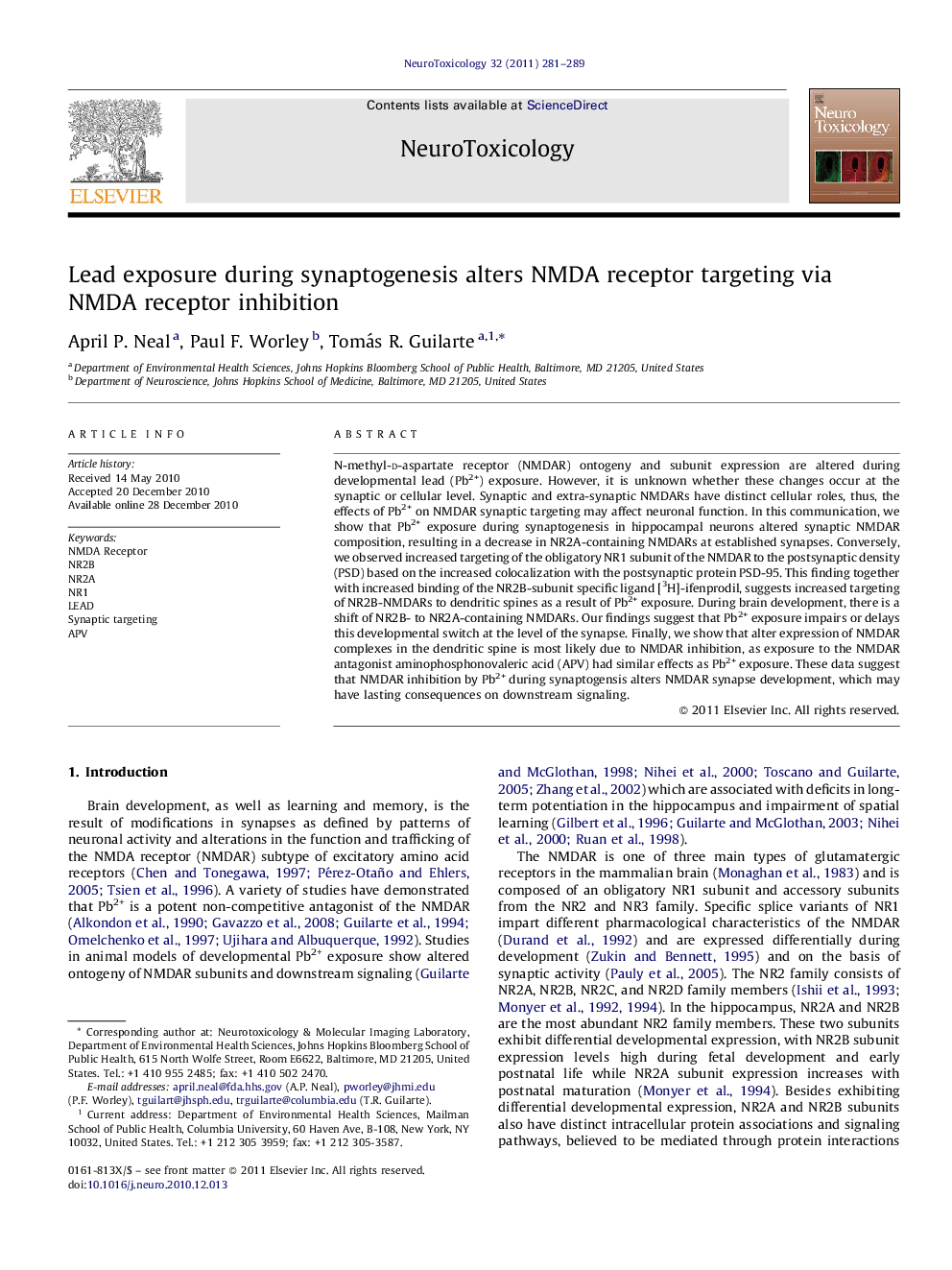| Article ID | Journal | Published Year | Pages | File Type |
|---|---|---|---|---|
| 2589894 | NeuroToxicology | 2011 | 9 Pages |
N-methyl-d-aspartate receptor (NMDAR) ontogeny and subunit expression are altered during developmental lead (Pb2+) exposure. However, it is unknown whether these changes occur at the synaptic or cellular level. Synaptic and extra-synaptic NMDARs have distinct cellular roles, thus, the effects of Pb2+ on NMDAR synaptic targeting may affect neuronal function. In this communication, we show that Pb2+ exposure during synaptogenesis in hippocampal neurons altered synaptic NMDAR composition, resulting in a decrease in NR2A-containing NMDARs at established synapses. Conversely, we observed increased targeting of the obligatory NR1 subunit of the NMDAR to the postsynaptic density (PSD) based on the increased colocalization with the postsynaptic protein PSD-95. This finding together with increased binding of the NR2B-subunit specific ligand [3H]-ifenprodil, suggests increased targeting of NR2B-NMDARs to dendritic spines as a result of Pb2+ exposure. During brain development, there is a shift of NR2B- to NR2A-containing NMDARs. Our findings suggest that Pb2+ exposure impairs or delays this developmental switch at the level of the synapse. Finally, we show that alter expression of NMDAR complexes in the dendritic spine is most likely due to NMDAR inhibition, as exposure to the NMDAR antagonist aminophosphonovaleric acid (APV) had similar effects as Pb2+ exposure. These data suggest that NMDAR inhibition by Pb2+ during synaptogensis alters NMDAR synapse development, which may have lasting consequences on downstream signaling.
